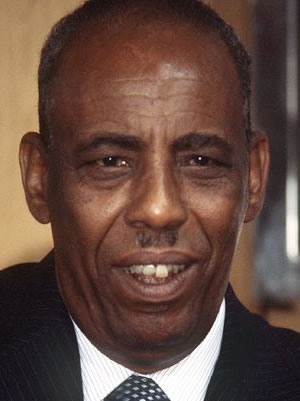Post: #1
Title: ž¦┘ł┘ä žĄ┘łž▒ ┘ä┘äž▒ž”┘Ŗž│ ž¦┘äž©ž┤┘Ŗž▒ ž©ž╣ž» ž¦┘äž║ž¦ž▒ž® ž¦┘䞯ž│ž▒ž¦ž”┘Ŗ┘ä┘Ŗž® ž╣┘ä┘ē ž©┘łž▒ž¬ž│┘łž»ž¦┘å (žĄ┘łž▒)
Author: Wasil Ali
Date: 04-08-2011, 02:36 AM
Parent: #0






|
Post: #2
Title: Re: ž¦┘ł┘ä žĄ┘łž▒ ┘ä┘äž▒ž”┘Ŗž│ ž¦┘äž©ž┤┘Ŗž▒ ž©ž╣ž» ž¦┘äž║ž¦ž▒ž® ž¦┘䞯ž│ž▒ž¦ž”┘Ŗ┘ä┘Ŗž® ž╣┘ä┘ē ž©┘łž▒ž¬ž│┘łž»ž¦┘å (žĄ┘łž▒)
Author: Abureesh
Date: 04-08-2011, 04:46 AM
┘ģž¦ ž»ž¦┘ģ ┘é┘äž╣ ž¦┘ä┘āž▒ž¦┘üž¬ž® ┘ģž╣┘垦┘枦 ž©ž¦┘é┘ē ž▓┘ł┘ä ž┤┘ā┘ä.
|
Post: #3
Title: Re: ž¦┘ł┘ä žĄ┘łž▒ ┘ä┘äž▒ž”┘Ŗž│ ž¦┘äž©ž┤┘Ŗž▒ ž©ž╣ž» ž¦┘äž║ž¦ž▒ž® ž¦┘䞯ž│ž▒ž¦ž”┘Ŗ┘ä┘Ŗž® ž╣┘ä┘ē ž©┘łž▒ž¬ž│┘łž»ž¦┘å (žĄ┘łž▒)
Author: BousH
Date: 04-08-2011, 05:06 AM
Parent: #2
| Quote: ┘ģž¦ ž»ž¦┘ģ ┘é┘äž╣ ž¦┘ä┘āž▒ž¦┘üž¬ž® ┘ģž╣┘垦┘枦 ž©ž¦┘é┘ē ž▓┘ł┘ä ž┤┘ā┘ä. |
ž©┘é┘ē ž▓┘ł┘ä ž┤┘ā┘É┘ä ┘ł┘䞦 žź┘Ŗž▒ž¦┘å┘Ŗ žø)
|
Post: #4
Title: Re: ž¦┘ł┘ä žĄ┘łž▒ ┘ä┘äž▒ž”┘Ŗž│ ž¦┘äž©ž┤┘Ŗž▒ ž©ž╣ž» ž¦┘äž║ž¦ž▒ž® ž¦┘䞯ž│ž▒ž¦ž”┘Ŗ┘ä┘Ŗž® ž╣┘ä┘ē ž©┘łž▒ž¬ž│┘łž»ž¦┘å (žĄ┘łž▒)
Author: jini
Date: 04-08-2011, 07:45 AM
Parent: #3

┘Ŗž«┘ä┘é ┘ģ┘å ž¦┘äž┤ž©┘ć ž¦┘䞯ž▒ž©ž╣┘Ŗ┘å
ž¦┘ä┘ä┘ć┘ģ ž¼┘åž©┘垦 ┘ģžĄ┘Ŗž▒ ž¦┘䞥┘ł┘ģž¦┘ä
ž¼┘å┘ē
|
Post: #5
Title: Re: ž¦┘ł┘ä žĄ┘łž▒ ┘ä┘äž▒ž”┘Ŗž│ ž¦┘äž©ž┤┘Ŗž▒ ž©ž╣ž» ž¦┘äž║ž¦ž▒ž® ž¦┘䞯ž│ž▒ž¦ž”┘Ŗ┘ä┘Ŗž® ž╣┘ä┘ē ž©┘łž▒ž¬ž│┘łž»ž¦┘å (žĄ┘łž▒)
Author: haroon diyab
Date: 04-08-2011, 08:13 AM
Parent: #4
ž│┘䞦┘ģž¦ž¬ ┘Ŗž¦┘łž¦žĄ┘ä
ž¦┘䞦ž©ž¬ž│ž¦┘ģž¦ž¬ ž¦┘ä┘ģž¬ž©ž¦ž»┘äž®
ž¬┘łžČžŁ ž¦ž▒ž¬┘Ŗž¦žŁ ž¦┘äž┤ž▒┘Ŗ┘ā┘Ŗ┘å
┘ä┘垬ž¦ž”ž¼ ž¦ž¬┘üž¦┘é┘Ŗž® ž¦┘äž│┘䞦┘ģ ž¦┘äž┤ž¦┘ģ┘ä
┘łž¦┘䞬┘Ŗ ┘ä┘ģ ┘Ŗ┘å┘üž░ ┘ģ┘å┘枦 ž│┘ł┘Ŗ ž¦┘䞦┘å┘üžĄž¦┘ä....!!!!!
|
Post: #6
Title: Re: ž¦┘ł┘ä žĄ┘łž▒ ┘ä┘äž▒ž”┘Ŗž│ ž¦┘äž©ž┤┘Ŗž▒ ž©ž╣ž» ž¦┘äž║ž¦ž▒ž® ž¦┘䞯ž│ž▒ž¦ž”┘Ŗ┘ä┘Ŗž® ž╣┘ä┘ē ž©┘łž▒ž¬ž│┘łž»ž¦┘å (žĄ┘łž▒)
Author: ┘äžĘ┘ü┘Ŗ ž╣┘ä┘Ŗ ┘äžĘ┘ü┘Ŗ
Date: 04-09-2011, 07:33 PM
Parent: #5
Special operations team hit top Iranian-Hamas arms smugglers in Sudan
DEBKAfile Exclusive Report April 7, 2011, 10:06 AM (GMT+02:00)
Tags: Al Qaeda chemical weapons Hamas Iran Libyan rebels Sudan
Remains of smugglers' car near Port Sudan
In accusing Israel of killing the two passengers of a Hyundai Sinai near Port Sudan Tuesday, April 5, the Sudanese Foreign Minister Ali Karti alleged a missile was fired from an aerial drone or a vessel on the Red Sea. debkafile's exclusive military and intelligence sources reveal that a special operations unit landed by sea and used a surface missile to hit the car and kill two top handlers of the Iranian-Hamas arms smuggling network in Sudan. The assailants waylaid the vehicle as it drove through the Kalaneeb region on the only blacktop road running through the Sudanese desert between Khartoum and Port Sudan.
Our sources further reveal that the passengers killed in the car did not arrive at Port Sudan airport by air, as previously reported, but by road from the northeastern Sudanese town of Atbara, which lies 344 kilometers north of Khartoum at the meeting-point of the Blue and White Niles.
This town of some 120,000 inhabitants is the base of operations of one of the largest and most ruthless arms smuggling network operating out of Sudan.
This network's long and murky record goes back to the 1980s and 1990s when it served al Qaeda. Its top operatives include members of the Masoud al-Qosi clan, some of whom joined up with Osama bin Laden and quit Sudan with him when he returned to Afghanistan in 1996.
One of Bin Laden's bodyguards, Ibrahim al Qosi, has spent the last seven years at the detention facility in Guantanamo Bay awaiting trial.
Over the years, Iranian and Hamas agents were given a niche in the expanding Sudanese smuggling ring to oversee the execution of the deals they commissioned for smuggling arms into Gaza. Those agents recently withdrew from direct involvement and deputized network members to handle the route to Gaza.
Its most recent commission was the covert transfer of mustard and nerve gas consignments which Hamas and Hizballah buyers purchased with Iranian funding and direction from Libyan rebels in Benghazi and which were bound for Lebanon and the Gaza Strip ŌĆō as debkafile was first to disclose on March 31.
The "merchandise" had reached Sudan from Libya in convoys under special Hizballah and Hamas guard.
On April 6, after the attack on the car, top Sudanese intelligence and military investigators arrived on the scene at around 18:00 hours to try and establish who perpetrated the attack and identify the two dead men. They found the bodies too blackened and burnt to identify and their personal documents mostly destroyed in the flames.
Khartoum then turned to Cairo with an urgent request for counter-terror and missile experts to help in the inquiry. They were also stalled by lack of proper forensic investigation gear.
In their initial examination, the Sudanese investigators believed they found Iranian ID belonging to one of the passengers while the second looked like a Palestinian; one of them had died in the car, the second outside. In the absence of local missing persons, the pair were presumed to be outsiders.
They also deduced that the hit-team was picked up by helicopter straight after the attack and flown to a ship standing by off the Red Sea coast of Sudan. The noise it made gave rise to the theory that car had been struck by an airborne missile.
The method of attack and clean getaway pointed to a sophisticated military organization capable of unconventional operations across great distances spanning thousands of kilometers. It would have required competent
|
|